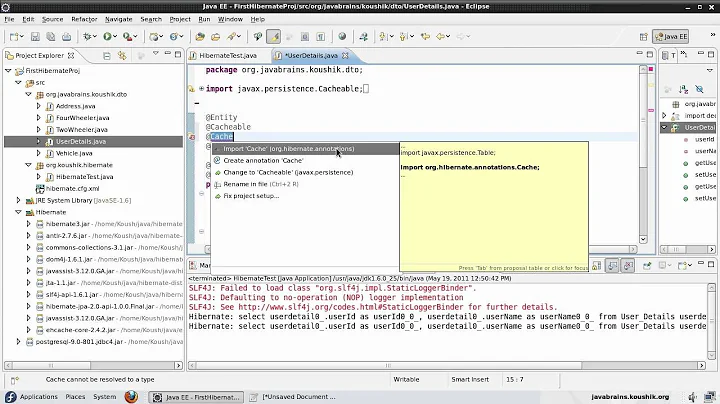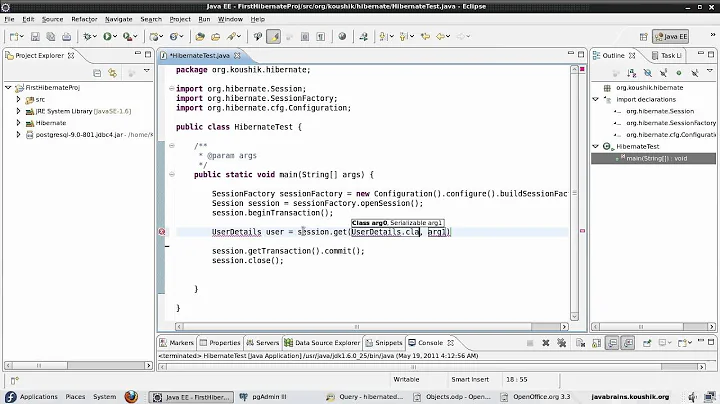Removing objects from NHibernate second level cache
the sessionFactory provides the methods you want... from the 19.3 chapter of the NHibernate reference:
To completely evict all objects from the session cache, call ISession.Clear() For the second-level cache, there are methods defined on ISessionFactory for evicting the cached state of an instance, entire class, collection instance or entire collection role.
sessionFactory.Evict(typeof(Cat), catId); //evict a particular Cat
sessionFactory.Evict(typeof(Cat)); //evict all Cats
sessionFactory.EvictCollection("Eg.Cat.Kittens", catId); //evict a particular collection of kittens
sessionFactory.EvictCollection("Eg.Cat.Kittens"); //evict all kitten collections
Related videos on Youtube
Comments
-
Max about 2 years
I just started thinking about using the NHibernate second level cache in one of my apps. I would probably use the
NHibernate.Caches.SysCache.SysCacheProviderwhich relies on ASP.net cache.Enabling the cache was not a problem, but I am wondering on how to manage the cache e. g. programmatically removing certain entities from the cache etc.
My application is some kind of image database. The user uploads images over a backend and can view it in the frontend by accessing
/ImageDb/Show?userId=someUserIdThe data does not change very often. And if it changes, the users would not matter a button named "clear my cache" in the backend that removes the cached objects for this user from the cache.
I found a solution online that can remove all cached objects from nhibernates second level cache. But thats a bit too brute force for me ... I dont want to clear the whole cache for dozens of users just because one user tried to clear the cache for his own data.
So what I basically wanted to do: selectively remove cached db objects from nhibernates second level cache in C#.
Is this possible? I guess it also depends on the cache provider. If this is not doable with the ASP.net cache provider, I am open for other built in / open source suggestions.
-
the_drow over 13 yearsI know it's probably not relevant now but note that your URI scheme is incorrect. It should be Users/[Id]/ImageDB/Show
-
Luke Schafer about 13 years@the_drow - unless the app is called ImageDb :) You're still mostly right, just have to change ImageDB to /Images or something
-
the_drow about 13 years@LukeSchafer: I wrote ImageDb only because the OP uses it.
-
Luke Schafer about 13 years@the_drow - yeah, sure, was just pointing out it might be a virtual directory is all :)
-
-
Emil Lerch almost 13 yearsThe role name here in the first parameter is the full Namespace+Classname+Propertyname of what you need to evict. You can see everything in cache by calling sessionFactory.GetAllCollectionMetaData().Keys.






